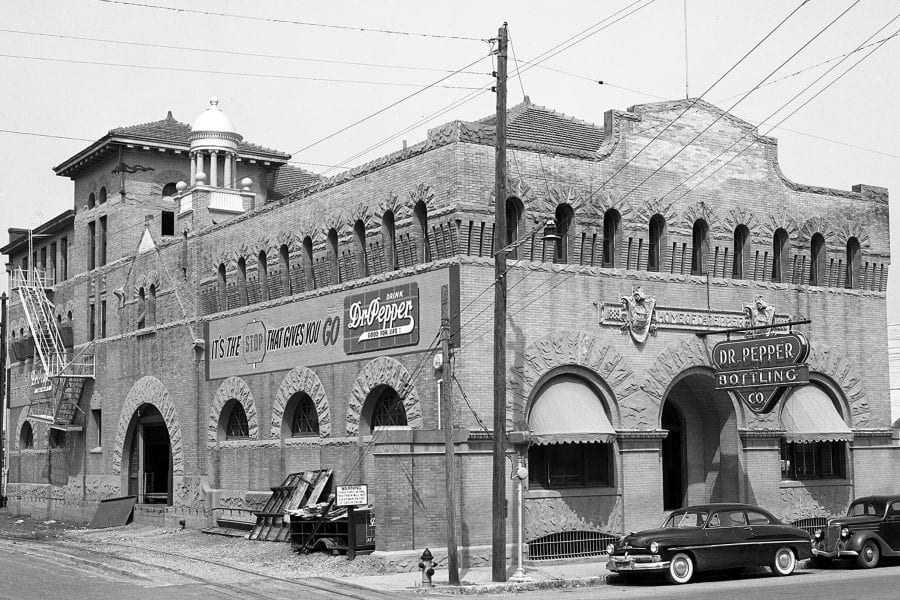Texas has changed quite a bit over the years, as is readily seen in our vast photograph and postcard collections. To help bring some of those changes to life, we’ve created a “Texas over Time” series of Meta Slider’s that will illustrate the construction and renovations of buildings, street scenes, and more. Our collections are especially strong on Waco and Baylor images, but look for some views beyond the Heart of Texas, too.
By Geoff Hunt, Audio and Visual Curator
Paul Quinn College-Former Waco Campus
The Rapaport Academy Public School and Doris Miller YMCA locations at 1020 Elm Avenue, Waco, TX., are housed on grounds and buildings that were once home to Paul Quinn College. This African American institution was originally started in Austin, TX., in 1872, as the Connectional High School and Institute for Negro Youth. When the school moved to Waco in 1877 on 8th and Mary Streets, it was known as Waco College and taught trades such as blacksmithing, carpentry, and tanning to newly freed slaves. It became Paul Quinn College in 1881 named after Bishop William Paul Quinn, the fourth Bishop of the African Methodist Episcopal Church. It was then relocated to Elm Avenue in east Waco on 20 acres of land that was once part of the Garrison Plantation. By 1979, the operating budget of the college was 2.5 million dollars and operated on funding by the A.M.E. Church, United Negro College Fund, federal funding, and private donations. In 1990, Paul Quinn College moved to Dallas, TX., where it is still in operation. The institution is the oldest liberal arts college for African Americans in the state of Texas. While the previously mentioned institutions house many of the former Quinn campus buildings, William Decker Johnson Hall (below) has remained vacant since the college’s move to Dallas.Continue Reading

















